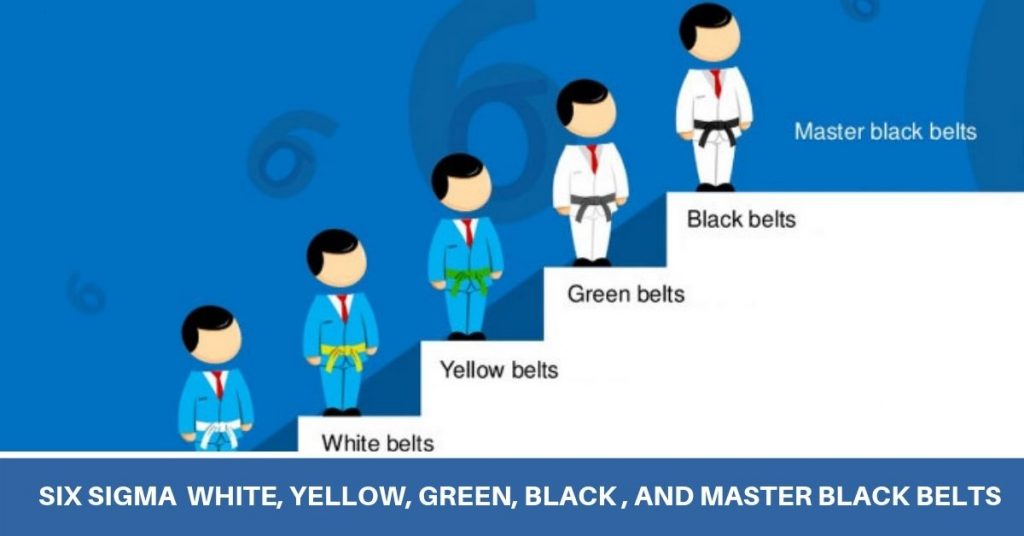
Six Sigma Belt Level & Importance Of Green Belt Certification
Six Sigma Levels And Their Functions
Six Sigma methods when utilized by professionals at every belt level will always work to increase the quality of service as well as the productivity improvements for the organization that hired them. Understanding the methods that will work well with the large scale projects at the Black belt level or if the Six Sigma project is smaller it should require no level above a Green belt is what these professionals do best.
These belt levels are comparable to martial arts belts because each belt signifies a level of achievement and knowledge in that field. At the top of the levels is a Master Black belt, which is not really a level, but more of a consultant and trainer of the Black belts. Most all of the larger Six Sigma projects with the mega corporations and companies are run by the Black belt level.

These Black belts must be trained by very knowledgeable and well qualified personnel to teach all aspects and functions of the methods to keep the projects on schedule and be able to deal with any unforeseen bumps in the road to project success. If they do experience bumps, Black and Green belts can consult the Master Black belts to get the projects back on track in a timely manner.
Black belts occupy the top level and are in charge of the large projects which will be using Lean Six Sigma methods to organize and get specifics on quality control within a corporation. For smaller project, a Green belt can take the reigns if they are trusted enough, and to ensure that the project will be successful, both Black and Master Black belts are on standby to be consultants. Yellow belts occupy the next level down and work as supporting staff for the upper level belts. They function in the collecting and analyzing data, as well as suggesting changes to improve the quality of different levels.
At the bottom of the tier is the White belts. They have a very important function that taps into the local resources and acts pretty much as a go between for the Champions and the Upper level belts. Although they really have no say so in the project in progress they simply follow the directives of the Black or Green belt leaders who are in charge.
The best way for organizations to really get the best results is for knowledgeable professionals to collect, analyze, measure and create success results. Their suggestions do improve as well as monitor the plans and projects when they are put into action. The best successes happen when these suggestions are implemented correctly and there is complete change cooperation from everyone. These factors will make a company’s future have a more successful quality control.
When this area is successful changed, the doors will open for the business to thrive as never before. There will also be necessary continual adjustments, but the resolutions are just an analysis and suggestion away. When all the data is analyzed, a clear picture of the problem areas will emerge so no resources will be wasted in the wrong areas.
The Importance Of Green Belt Training
The successful green belt candidate is a team player, or someone who is comfortable working as part of a group to implement change. A candidate who is interested in being the leader of the project will not make a good candidate for six sigma green belt training and should in fact be steered toward best lean six sigma certification instead. Green belts are trained to work under the direction of black belts to implement the culture shift for workers when six sigma methodology is introduced into the organization. In other words, six sigma green belts lead the project or quality improvement as part of the team and along with their full time job within the organization.
Six sigma green belt training teaches the candidate to operate simultaneously within two frameworks, the organizational one and the six sigma culture. Green belts answer to black belts and or master black belts who function as coaches and mentors. Six sigma green belt training teaches improved problem solving skills, targeting DMAIC or definition, measurement, analysis, improvement and control of the core process. Green belts are focused on smaller projects that are carefully defined pieces of the whole process within the six sigma guidelines.
A simpler definition of green belt training and responsibilities to the black belt in charge of the project as a whole is one of support, legwork, gathering data, initiating tasks and experiments. Their work must never stray from approved methods and statistical tools and always fall within the boundaries of six sigma culture and framework.
Properly trained six sigma green belts are comfortable and can function within any industry and/or environment. The six sigma continues on with how to communicate business strategy to the rest of the organization, the best and proper way to apply DMAIC, choose successful projects, choose project teams, integrating improvements and how to effectively execute them all.
Remember, six sigma green belt training is for training team players not leaders. The green belt is the hands on trainer of floor workers, so to speak Article Search, while the lead should come from black belts and master black belts. The six sigma green belt mindset is toward constant improvement of quality.







